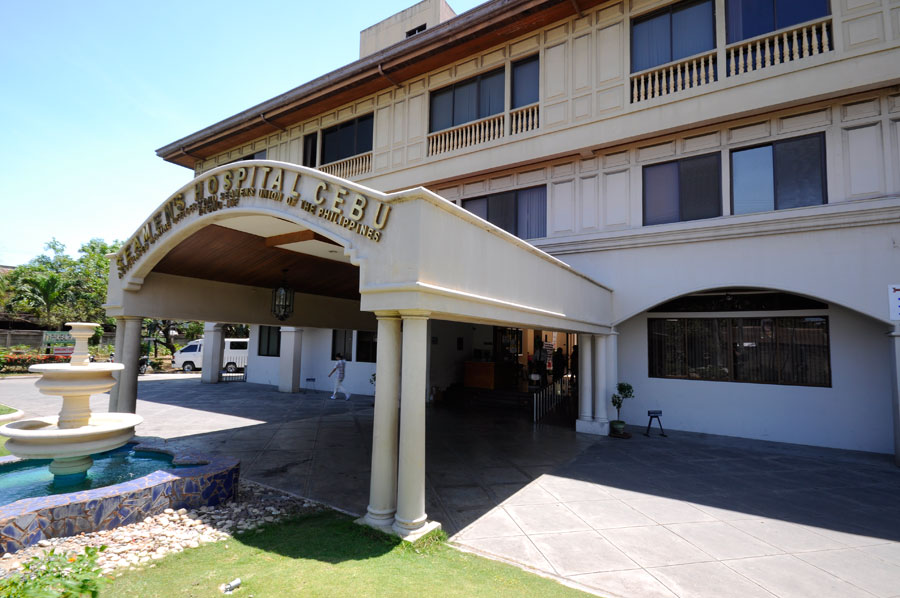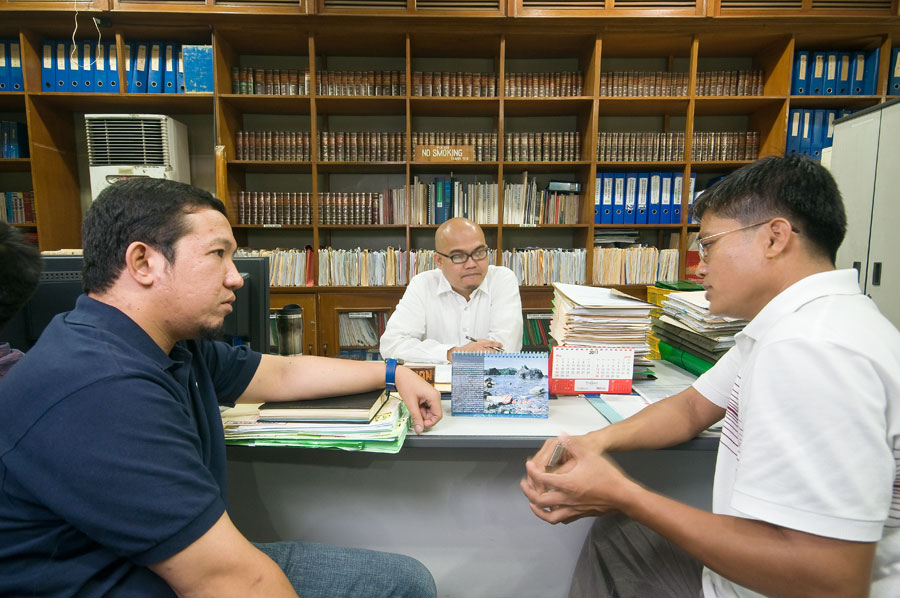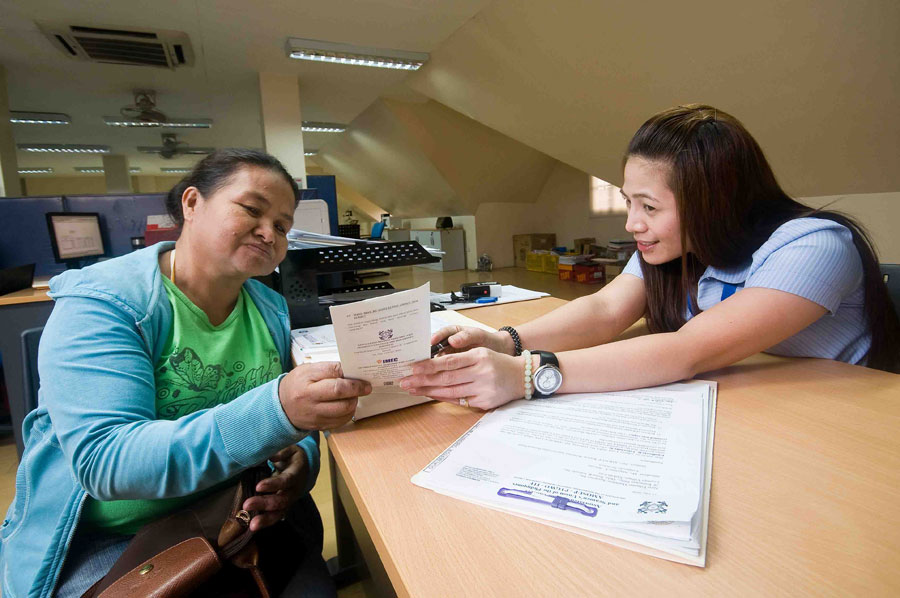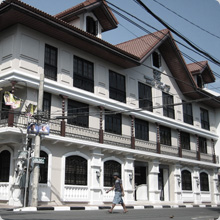
The department showcases the hospital’s sincerity and determination in the treatment of illnesses and delivery of medical laboratory services of patients
It is one of the most modern and well-equipped departments at Seamen’s Hospital that renders diagnostics tests of illnesses of AMOSUP members and their qualified dependants.
Since all tests are being carried out at the hospital’s Pathology Department to assist the physicians in treating their patients, the Union has invested in equipment and technology for their anatomical and clinical units. The department now consists of six pathologists and 19 medical technologists.

Department chairman Dr Gilbert Gonzales says the Hospital has the “best lab equipment compared with about 95% of the country’s medical centres and hospitals, both government and private.” Under his chairmanship comes the competence of its chief medical technologist Fraince C Anero in the delivery of laboratory services to patients.
Dr Gonzales says pathology is the showcase of a hospital’s sincerity and determination in the treatment of illnesses and delivery of medical laboratory services to its clients. Some of which include the process of identification and characterisation of bacterial species, blood extraction, clinical and biochemical mechanisms of the body in relation to disease, microscopy and other modern diagnostic pathology.
Anatomical and clinical pathology
The department is divided into anatomical and clinical pathology. The Anatomical Section processes body tissues and fluids for gross, cytological and histological (microscopic) examination and diagnosis. It also provides special and immune-histochemical stains as additional tools in diagnosis. Frozen section services are offered for intra-operative diagnosis.
The clinical/laboratory medicine section utilises high end state of the art and top of the line laboratory analysers and reagents for the laboratory tests and analysis that allow fast and accurate diagnostic results in the hospital.
Special areas of clinical pathology that are carried out by the department include Clinical Chemistry, Hematology, Clinical Microscopy, Bacteriology, Immunology and Serology, Blood Bank. Drug & Alcohol Screening Test is also available. Pre-Employment Medical Examination is also offered only for seafarers.
Bacteriology
Equipped to perform bacteriology, the Pathology Department does not perform it manually. Unlike more than90% of hospitals in the Philippines, it can identify the bacteria as well as its sensitivity to a certain drug with minimal inhibitory concentration (MIC) by using a Vitek 2 machine. This machine works economically that can release results in as little as five to eight hours. Its most common specimens are urine, exudates, stool and respiratory specimen.
Blood extraction
As an essential part of the department, the Blood Extraction Unit plays a major role when it comes to pathology and laboratory testing and procedures. It offers a wide variety of quality laboratory services to both seafarers and their dependants.
The Blood Extraction Unit is conveniently located inside the hospital beside the Histopathology Section and behind the main laboratory. This division is also easily accessible from the ER Department, OPD (Out-Patient Department), Radiology, EENT and other hospital departments.
Phlebotomy, or the drawing of blood sample, is one of the major functions of this unit. All the staffs rotating in this division have undergone training in phlebotomy and are licensed Medical Technologists. It is a clean, well-lit and well-ventilated room with three extraction chairs with armrest, to accommodate multiple number of patients at a time and reduce the waiting time for other patients to be attended for, especially those who are in their fasting state.
Clinical chemistry
The Clinical Chemistry section determines the chemical and biochemical mechanisms of the body in relation to disease, mostly through the analysis of body fluids such as blood or urine. The section provides a high quality laboratory services to union members and dependants through the help of front liners clinical staff (medical technologists) that have undergone different trainings and seminars. It is also equipped with internationally competitive analysers that give reliable results on a short turnaround time.
The section performs wide variety of quantitative analysis of body fluids such as routine chemistry, lipid profile, kidney function test, hemoglobin A1C, amylase, lipase, creatinine kinase, electrolytes, lactate dehydrogenase, CKMB, Trop-I and arterial blood gas determinations.
Clinical Microscopy deals with the scientific analysis of body fluids such as urine, stool and semen. The physical, chemical and microscopic examinations of urine provide initial diagnostic information concerning metabolic dysfunctions both renal and non-renal in origin. A skilled medical technologist performs the manual preparation and reading of the sample.
It also provides urinalysis, fecalysis and seminalysis among union members and their dependants.
Immunopathology
Immunohistochemistry and most recently in situ hybridisation has contributed greatly to modern diagnostic pathology due to its specificity and sensitivity. For the last decade, the hospital has developed a comprehensive range of antibody markers and probes for immunohistochemical diagnostic services for its patients and acquired new antibody tests regularly. The hospital actually has more immunohistochemistry markers than the more than 95% of medical facilities in the Philippines.
In particular, Seamen’s Hospital pathologists play an integral role in the care of cancer patients by analyzing tumor samples to make precise diagnoses and to stage cancers. The expertise of its pathologists is essential in determining the best course of treatment. Reports from pathologists also help gauge a tumor’s response to therapy to determine its effectiveness and plot a new course of treatment if necessary. The ever increasing role of theranostics or therapeutic diagnostics cannot be over emphasised.







